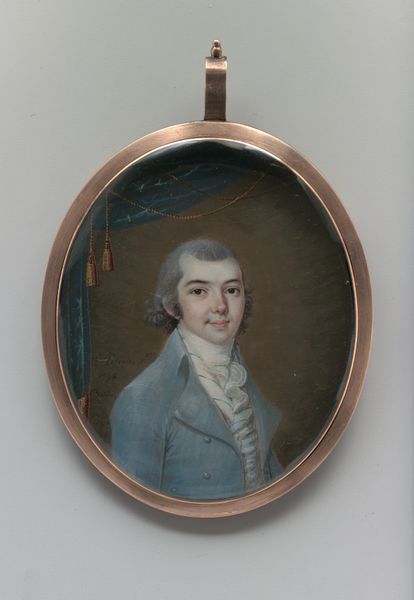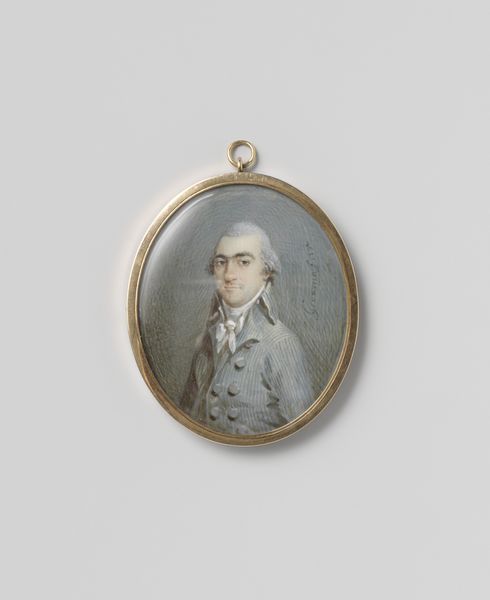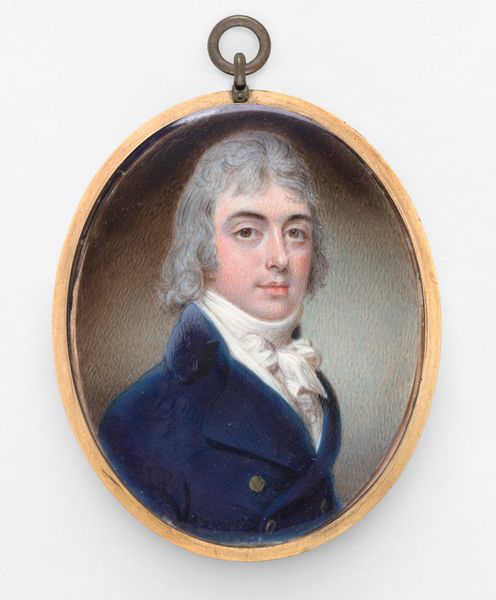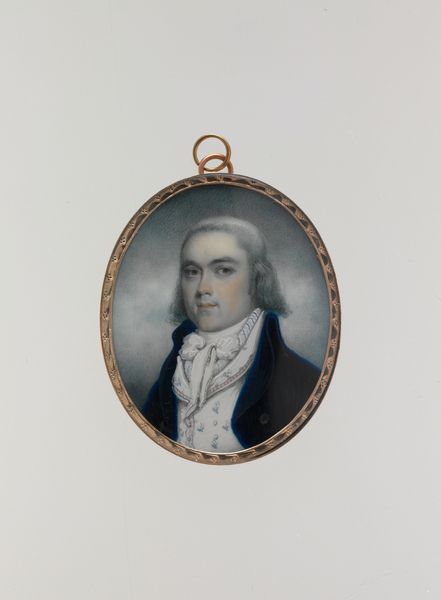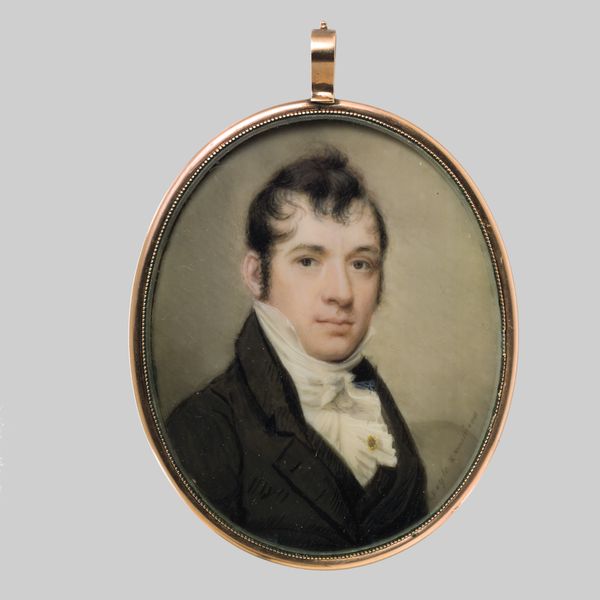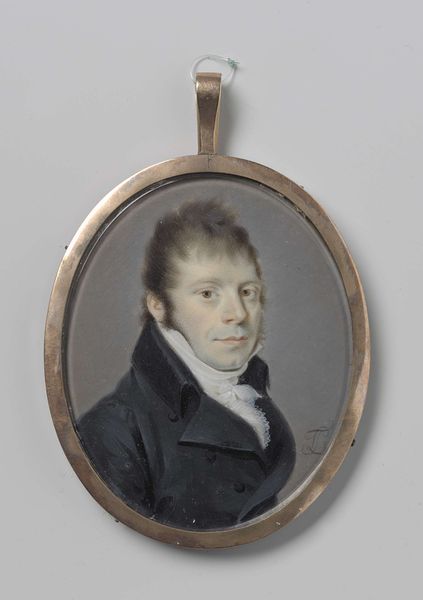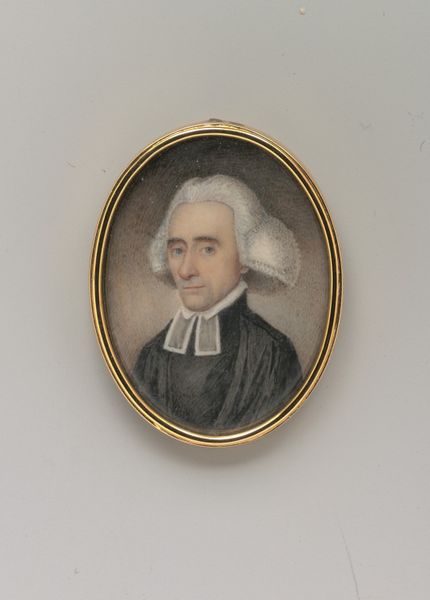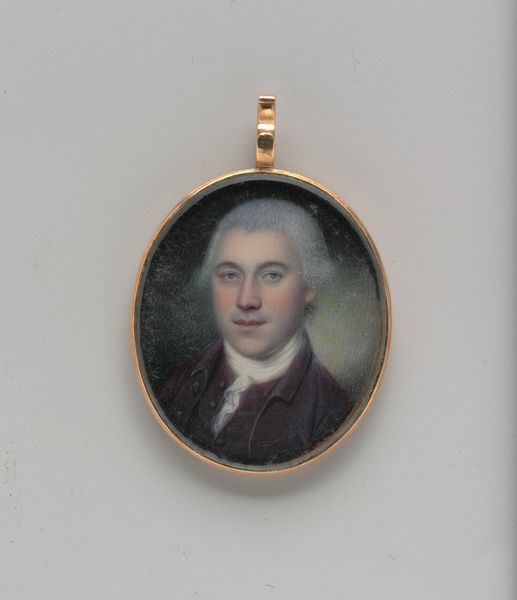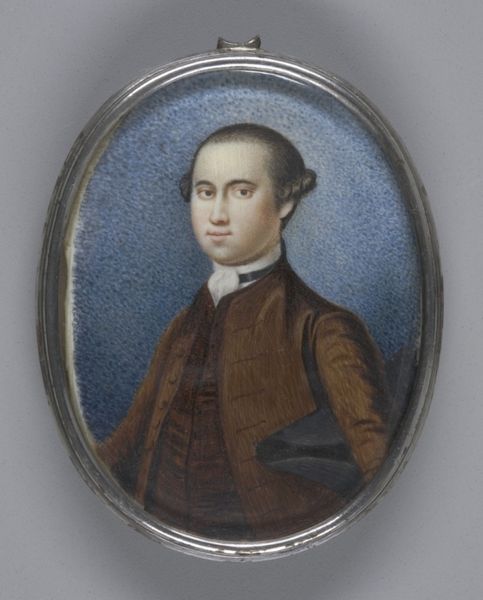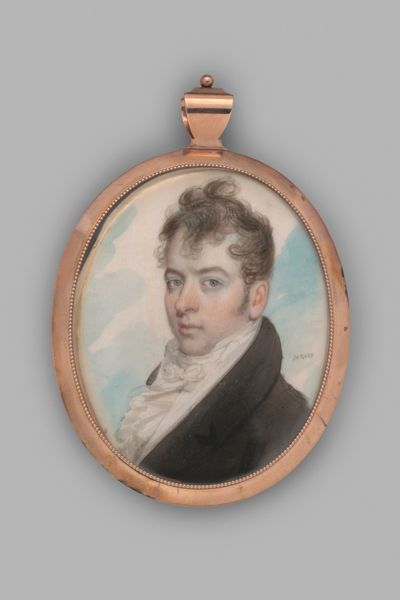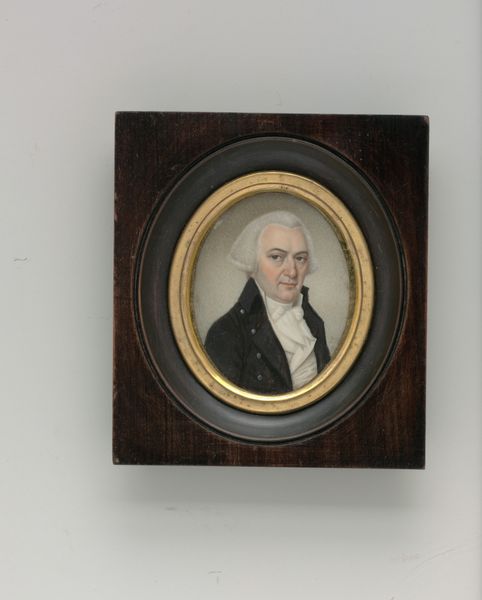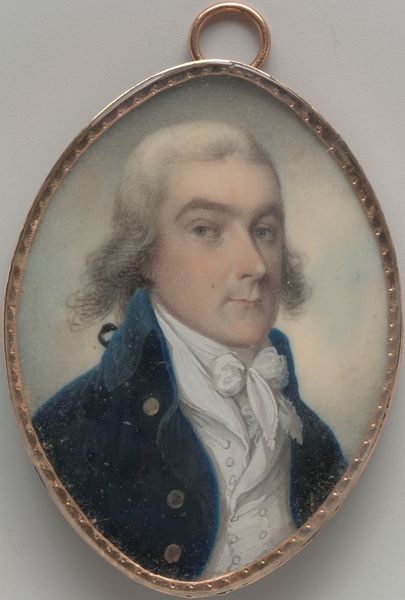
painting
#
portrait
#
painting
#
sculpture
#
classical-realism
#
framed image
#
romanticism
#
academic-art
#
miniature
Dimensions: width 14.8 cm, height 12.5 cm, depth 1.8 cm
Copyright: Rijks Museum: Open Domain
Curator: This is "Portret van Herman Willem Daendels" painted in 1815 by Simon Jacques Rochard. It's a beautiful example of a miniature portrait from that era. Editor: My first impression is the intimacy of the piece. The scale draws you in, like a whispered secret. And there's a formality, a kind of restrained power, in the sitter's expression. Curator: Exactly. Miniatures were incredibly popular, serving a crucial function of image dissemination, particularly amongst elite networks. This would have been worn, carried, perhaps given as a token. The material tells its own story – the painstaking application of pigment on, presumably, ivory. How does its size play into ideas about commodification and elite circulation of likenesses? Editor: Knowing Daendels’ history complicates my initial view. He was a controversial figure, a general and governor known for both reform and brutality in the Dutch East Indies. Seeing him here, rendered so precisely, almost softens his image, which is troubling considering the exploitative labor practices he implemented. Curator: Indeed. Rochard would have likely been commissioned to portray him in a favorable light. The artistic process and commission become tools for reputation management. The sitter's gaze and confident bearing support this. Editor: Absolutely. This portrait also needs to be considered within the context of colonialism and the larger structures of power that enabled it. How does Rochard, as the artist, participate in these colonial narratives? Are we complicit when we admire the artistic mastery while remaining blind to its context? Curator: That’s a very valid point. When thinking of how this miniature might have been crafted, by whose hands, and for what specific market— it highlights labor conditions not traditionally celebrated alongside its formal art-historical appreciation. This forces us to ask difficult questions about how aesthetics are historically bound up in complex economies. Editor: This really encourages one to question traditional art historical narratives. The piece itself serves as a point of departure, a springboard into wider dialogue about historical narratives that require interrogations. Curator: Well said. Considering how something is made provides deeper insight into the world that created it. Editor: Ultimately, an artwork like this prompts me to seek not only its beauty, but also the socio-political framework in which it came into being.
Comments
No comments
Be the first to comment and join the conversation on the ultimate creative platform.
